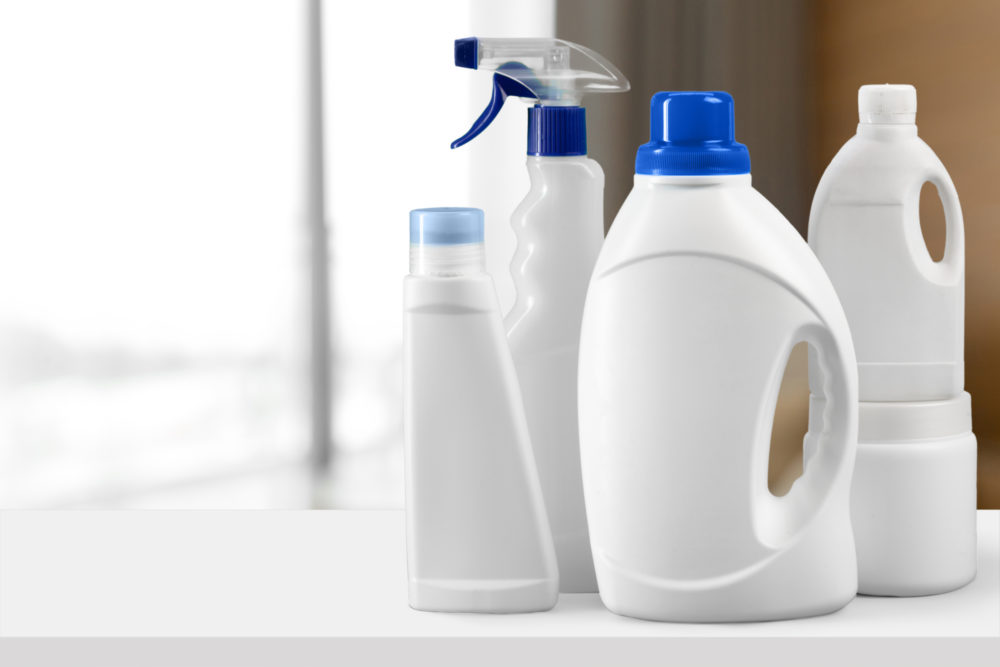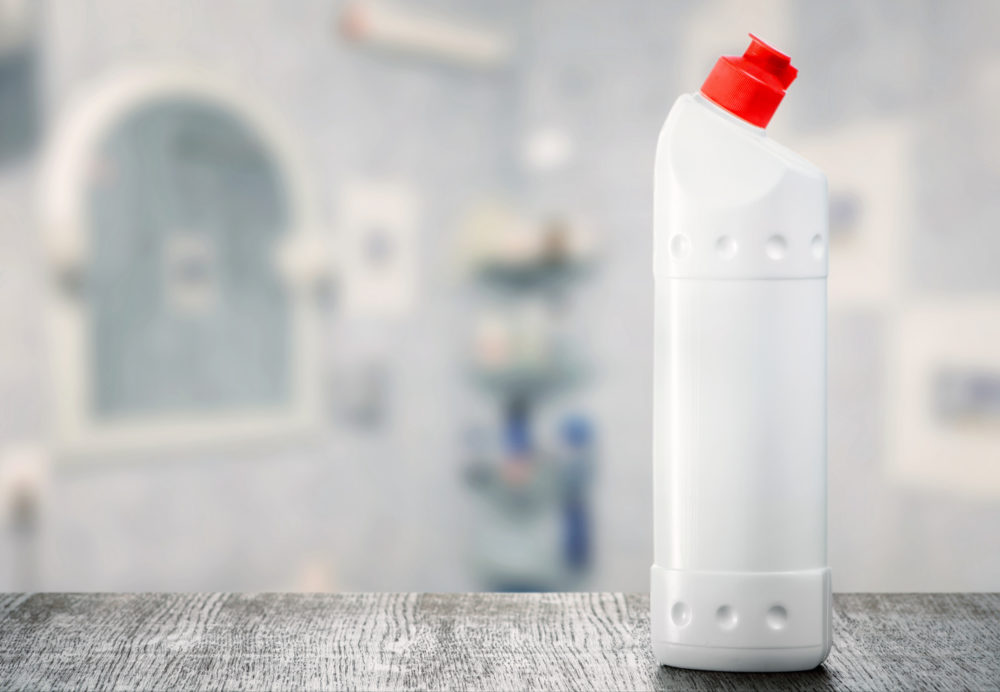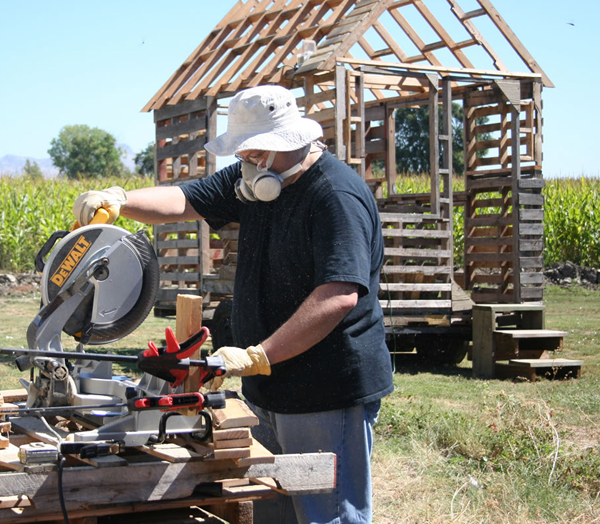Can You Put Bleach In RV Water Tanks?
Bleach is often used to sanitize areas, as bleach kills 99.9% of bacteria. However, it is very harsh and strong when undiluted. It can also cause serious harm to the human body, including burns, poisoning and even death.

Contents
To use bleach properly, you have to dilute it to its appropriate solution to reduce corrosive damage to yourself or the RV component.
Keep in mind, some bacteria are beneficial; bleach kills all bacteria non-discriminatorily. Also, overuse of cleaning supplies like bleach can contribute to a person’s inability to fight off “super-bugs” in a dirty environment (which camping is).
Therefore, bleach should be used sparingly and strategically, only to shock the RV system once in a while for a scheduled deep-sanitization session. Don’t over-sanitize all RV surfaces constantly, especially not if you are in skin contact with them, as your skin will absorb the bleach overtime.
To perform the deep-cleaning bleach soak, leave the diluted bleach solution in the tank for at least 8-12 hours to permeate the areas and to kill off all bacteria.
Can You Sanitize An RV Water Tank Without Bleach?
There are many less harsh and equally effective natural sanitizing products available that one can use to sanitize the RV tank without the use of bleach. Some healthier alternatives include: hydrogen peroxide, white vinegar, and baking soda.
There are also different antibacterial essential oils one can use (but make sure you dilute appropriately). One study found that four essential oils in particular — lemongrass, eucalyptus, peppermint and orange — were effective against all of the 22 bacterial strains tested. What’s more, multiple studies have found that tea tree oil has both antibacterial and antifungal properties. (Source: www.bustle.com.)
The main bacteria you are targeting are Listeria, E. Coli and Salmonella. There is a chart below that shows the effectiveness of the alternatives VS the use of bleach:
Hydrogen peroxide and white vinegar seem like good (and much safer and healthier) alternatives to chlorine bleach.
(Source: rvblogger.com.)
What Kind Of Bleach Should You Use In An RV Water Tank?
For the sanitization of the RV water tank, a ¼ cup of bleach for every 15 gal of freshwater capacity is required.
Many RVers use Clorox or any off-brand bleach to sanitize the RV water tank. A gallon of bleach is very inexpensive: one gallon costs anywhere between $8-15, depending on brand and quality.
For example, brands like Seventh Generation or Ecover Zero offer chlorine-free alternatives that use hydrogen peroxide or other, environmentally and health-wise safer options. These are slightly more expensive.
How Much Bleach Can You Add To An RV Water Tank?
As mentioned above, one must dilute the bleach in order to avoid harm to self or the RV equipment, due to the corrosive nature of chlorine bleach.
The recommended dilution ratio is 1 full cup of bleach for every 50 gallons of water tank capacity. Thus, if your water tank can hold 100-gallons of water, use 2 cups of bleach. If your tank holds 25 gallons, use 1/2 cup. This allows the removal of bacteria build-up and other waste products that cause the holding tanks to smell.
Adding too much bleach will definitely damage the RV water tank, as the chlorine molecules bind with the plastic and rubber molecules. In fact, too much of it can specifically damage the seals and gaskets in your RV. Plus, it also kills the good bacteria that help break down the waste in your tank.
How To Sanitize An RV Tank
The sanitization of the RV water tank after the RV has been in storage warrants safe use of the water and reduces or completely eliminates the odors caused by bacteria growth in the tank overtime.
Follow the steps below for proper sanitization:
Step 1: All drains are closed and drain plugs are installed.
Step 2: Mix the proper bleach ratio: ¼ cup of household bleach for every 15 gal of holding tank capacity. Mix the bleach measure with water in a 1 gal container.
Step 3: Use a funnel to pour the bleach-water solution into the freshwater tank.
Step 4: Fill the freshwater tank completely full with water.
Step 5: Turn the water pump on and run water through all hot and cold water faucets until you smell bleach. Do not forget about the showerhead.
Step 6: Turn off the faucets and let the bleach mixture sit in the freshwater tank for at least 12 hours.
Step 7: Drain all the water (incl. the water heater tank) and fill up the tank with potable water.
Step 8: Turn on the pump and open all the faucets until you no longer smell bleach. You might have to repeat this process several times until the bleach is fully out of the RV water system.
See this video for details: https://www.youtube.com/watch?v=E0CsGjobAL0

Why Sanitizing Your RV Tank Is Necessary?
You should sanitize your tank in following situations:
- First time use after purchase (especially when it’s a used unit with unknown history)
- When taking the unit out of storage for use
- When you have funky water odors that just won’t go away
- Every six months if full-timing to “reset” your freshwater tank
There are two ways to test to see if your RV water tank is clean: the non-scientific way and the scientific way. The non-scientific way is to go by the smell of the water from the faucet after you sanitized the entire water system. If you want to have a peace of mind and choose the scientific approach, you can purchase water quality test strips to verify the water quality and safety coming out of your faucet. A possible option looks like this: Water Test Strips.
FAQs
Can you run bleach through your RV hot water tank?
Yes, but make sure it is properly diluted, as mentioned above. ¼ cup of bleach per 15 gallons of water in the freshwater tank prior to turning on the hot water tank.
Does bleach hurt RV holding tanks?
It does not hurt the holding tanks if properly diluted (as mentioned above). Also, cleaning your black water holding tank is best done when you’re fully hooked up and have both a water and sewer connection. Avoid using bleach or antifreeze for your deep clean, as both of these can dry out rubber seals and ultimately ruin your sewage system.
Will bleach harm RV plumbing?
Highly concentrated and extended overuse of bleach could cause harm, so make sure you use the proper dilution and do not leave highly concentrated bleach to sit in lines for long amounts of time.
Can you pour bleach in your RV toilet?
Pouring concentrated bleach down the RV toilet is not a good idea, as the bleach can corrode the toilet seals and even the toilet walls (if you do not have a porcelain toilet).




